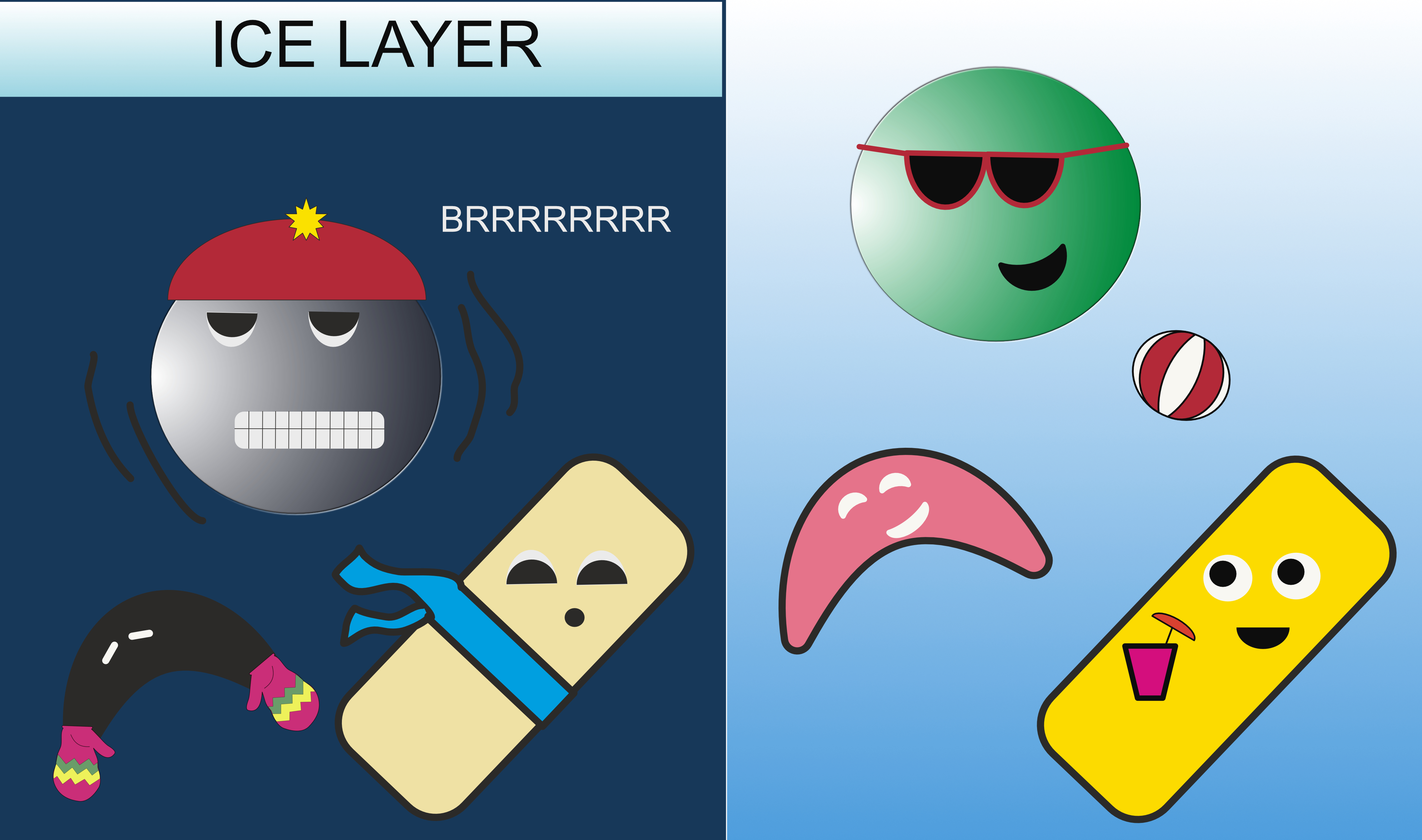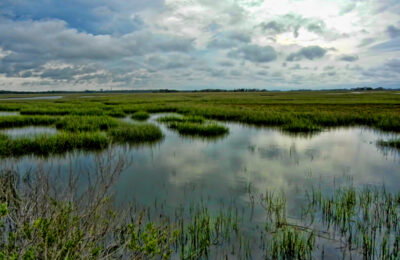The paper: Marine Bacterioplankton Seasonal Succession Dynamics. Carina Bunse and Jarone Pinhassi, Trends in Microbiology, 2017. https://doi.org/10.1016/j.tim.2016.12.013
In the Northern hemisphere, the weather is getting colder, hot chocolate abounds, and the winter coats are getting dusted off. What happens in the ocean when the weather changes, though? We know some marine animals migrate to warmer waters when winter comes. Others try to have bodily features to adapt to the changes without looking for new real estate. But what about the base of the whole marine food chain – microorganisms?
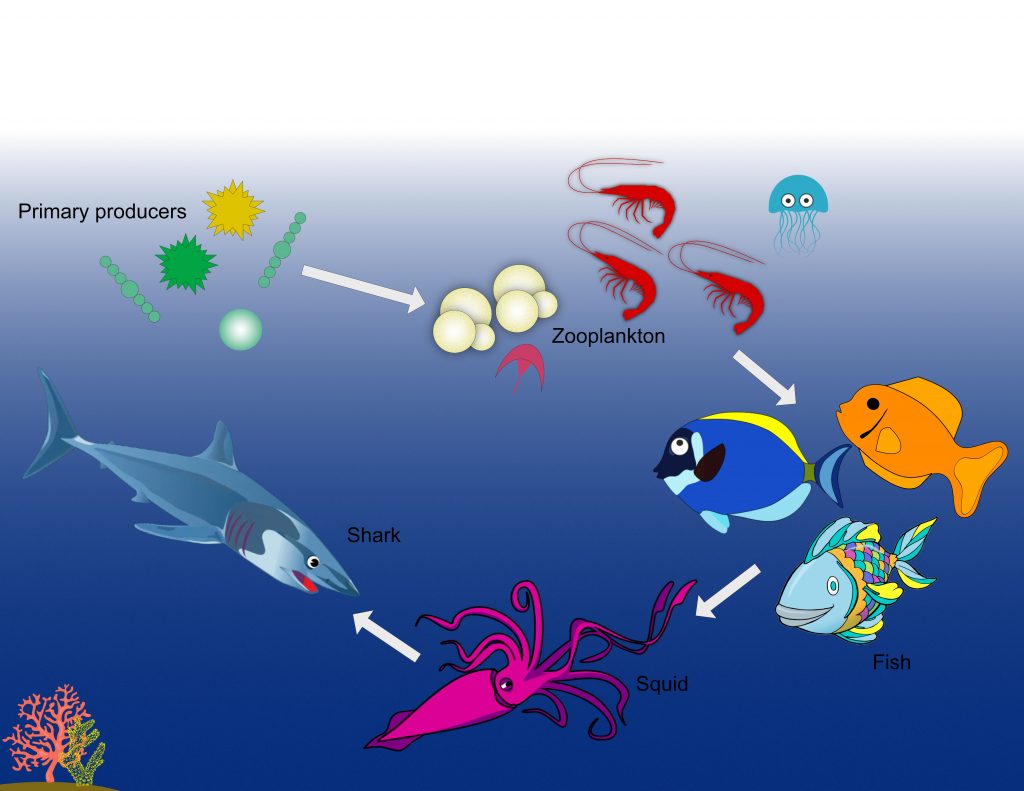
Lots of microorganisms live in the ocean. They can be photosynthetic, harnessing the sun’s energy like plants on land do. These little photosynthesizers get eaten by heterotrophs (organisms that have to eat for their energy), many of whom are microorganisms as well. About half of the organic carbon-based matter that is made in the ocean goes through this type of bacteria. Like us, all of these microbes feel the effects of colder temperatures. In spirit with cold weather and the wintery theme week, let’s look at how these microbes respond to seasonal differences in polar regions.
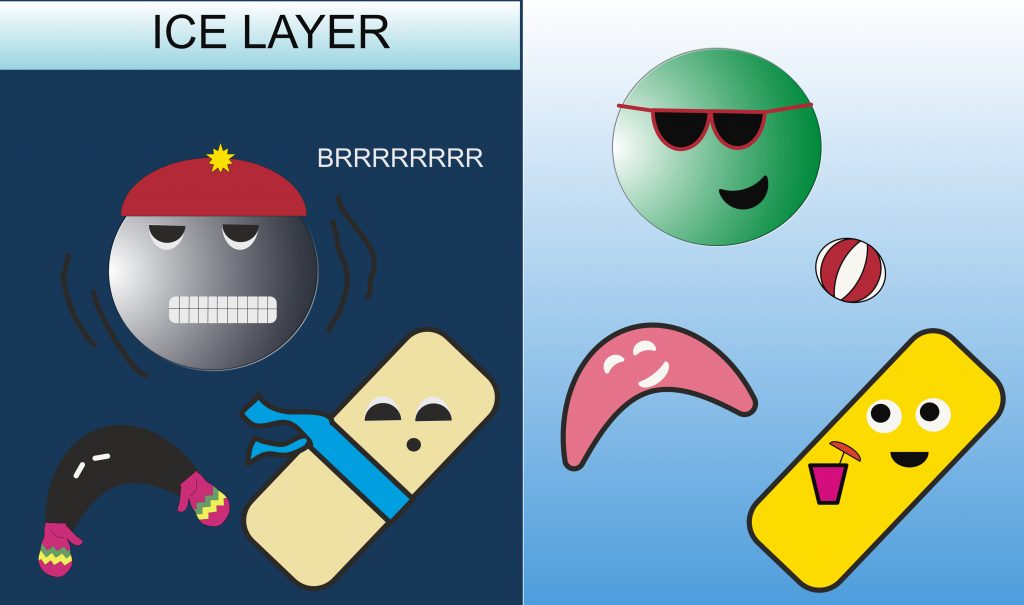
The polar regions are in the latitudes above 60°N and S, so places like the Arctic and Antarctic. In the winter, much of the polar waters are covered in sea ice, which can be further blanketed by snow. There is little light to support photosynthesis, and what light is available can be blocked from the oceanic microbes by snow and ice layers. You can imagine this impacts the microbes quite a bit. During these cold, dark months, microbes that can produce their own food through chemolithoautotrophy thrive. Chemolithoautotrophy is sort of like photosynthesis. Instead of sunlight for energy though, these chemolithoautotrophs use chemical energy to make their food from carbon dioxide. It makes sense that when there is no sunlight for energy, the microbes that don’t need sunlight do well.
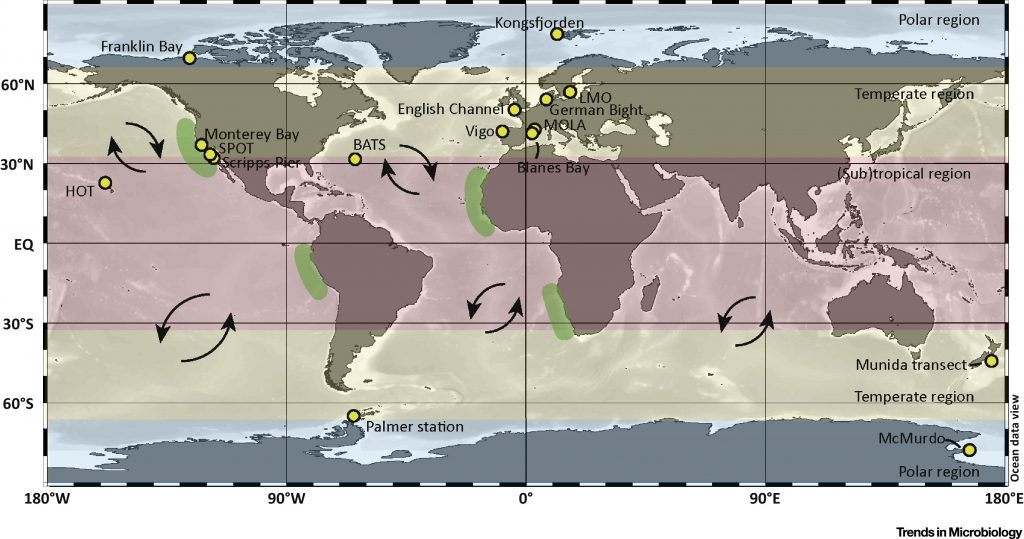
Like flowers, microbes can ‘bloom’ in the spring. Not in the sense that they open up petals. ‘Bloom’ in this case means that some population or community of organisms thrives and rapidly multiplies. In the polar regions, this happens because warmer temperatures and longer days begin to melt snow on top of the ice. As more light and higher temperatures are available, photosynthesis can resume in the icy layers on top of the ocean. Once the ice covering the oceans melts, the bloom intensifies, and more photosynthetic organisms take over. In the summer, organisms that like eating complex organic matter produced by photosynthesizers flourish. It turns into a bit of a microbial buffet. Also, a type of metabolism called photoheterotrophy becomes more important during these sunnier times. Photoheterotrophs will eat organic matter, like sugars and proteins, but use sunlight to get energy.
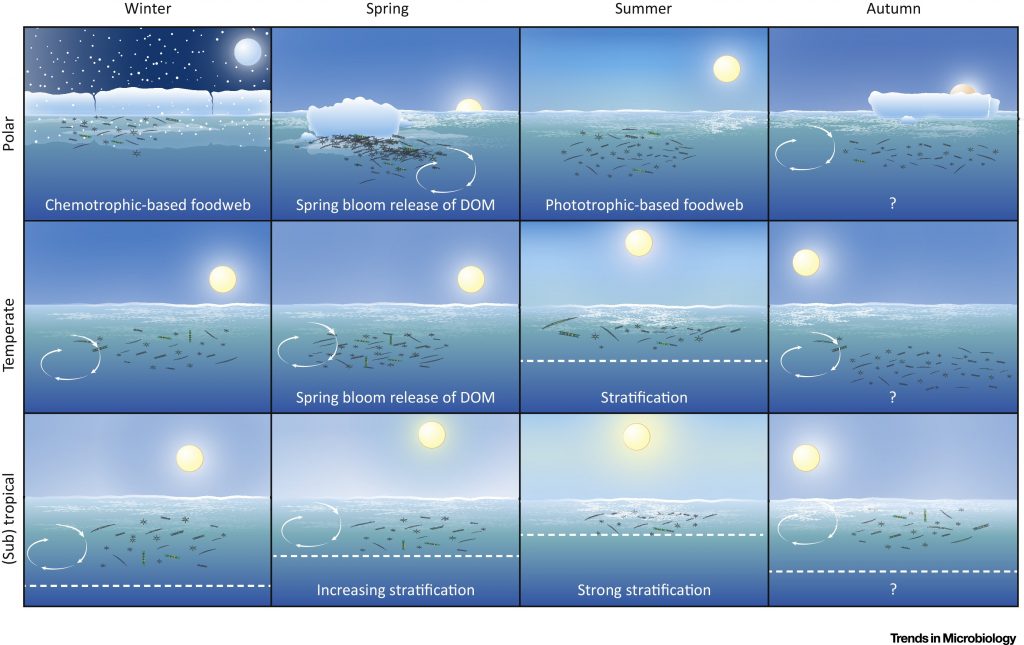
What does this mean to us in warmer climates? Well, the ocean regulates a lot of climate. As global climate change impacts how much ice forms in the poles, we may see microbes respond differently to changing seasons. Since these microbes are responsible for using a lot of carbon dioxide, and producing food to support the marine food chain, knowing how microbes change with the seasons is important. This will help us decide how to best keep our polar sources of fish and other food happy, how to keep the ocean healthy, and maybe even figure out some clever ways to help climate change!
I am a PhD student studying sediment geomicrobiology at the University of Southern California. My primary research interests lie deep under the sea studying how microorganisms survive in dark environments and how they interact with chemical cycles in sediment and on earth. When I surface from my studies, I enjoy backpacking, trying to mimic my ridiculous dog, and applying my laboratory techniques in the kitchen.

